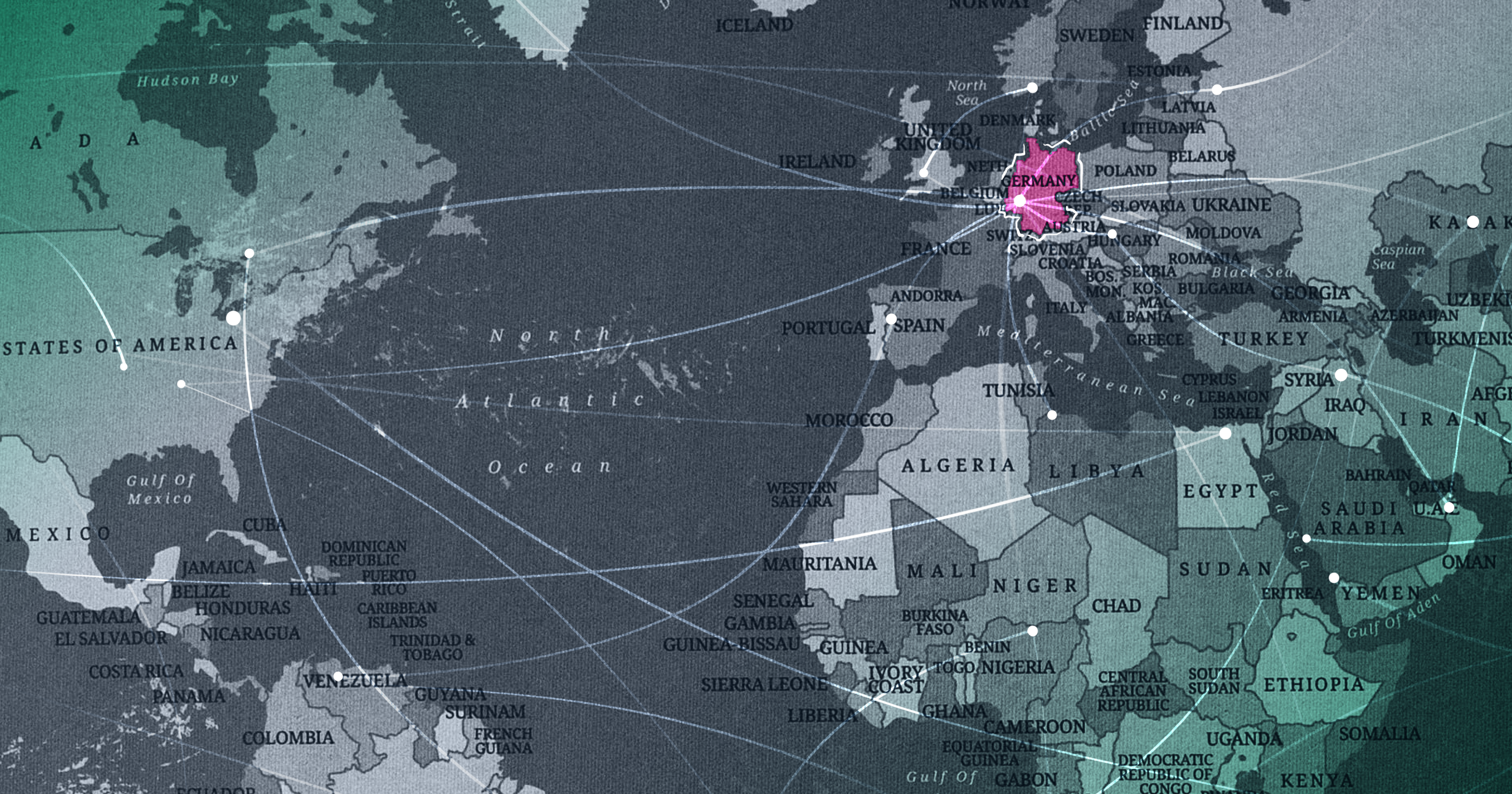Germany has long been hailed as a global leader in technological development. Now, inspired in part by Chancellor Olaf Scholz’s calls for a “decade of investment” in tech innovation, spikes in R&D expenditures signal a new era in the German research landscape.
The impact reaches beyond German borders. Many of the country’s most renowned non-university research institutes are known for their eagerness to partner with international academics and private researchers. Here’s what R&D leaders need to know.
As part of Halo’s series on international R&D, we reviewed fundamental indicators of the German research landscape. Read our previous article about one of Israel’s leading manufacturing companies.

A history of research in Germany
Germany is considered a world leader in technological advancement. In fact, some experts have called Germany the “origin of the research university and the independent, extra-university research institute.”
Part of its secret: collaboration between educational and scientific research establishments, the business community, and government bodies triggered the historical formation of the ‘triple-helix’ model of innovation and development.
Since 1871, the country has maintained its position as the European Union’s largest economy, driven primarily by its progress in research and development. Germany’s innovation has been so influential in the history of scientific innovation that it is credited as the source of inspiration for the “institutionalization of discovery” and the “industrialization of invention.”
Today, the country lives up to that precedent with Chancellor Olaf Scholz’s recent interest in growing the nation’s tech sector. In efforts to modernize the German economy and gain a competitive edge in the context of the United States and China, Scholz has called for a “decade of investment,” according to Bloomberg.
CNBC reported last year that European startups were on track to raise $121 billion, roughly tripling the total of $41 billion in 2020. It’s the first time that startups in the region have raised more than $100 billion, signaling growing investor interest in the “rapidly growing tech industry.”
As one of the world’s top investors in R&D and powered by university and non-university research institutes, federal and state institutions, and private companies, Germany in particular is in an excellent position to take advantage of the changing climate. As of 2018, almost 105 billion euros were invested in German research and development—and industry accounts for the largest share.

Three organizations to know in German R&D
The German private sector is a driving force of current technological advancement in the nation, accounting for 69% of research expenditures and contributing 72 billion euros to research in 2018.
The widespread support for R&D is not constrained by the country’s borders, as the German R&D network makes “thorough use” of international connections for both funding and collaboration.
For example, German universities have representative offices in 14 countries, and over 37,000 academic agreements exist between German universities and institutions and those abroad.
According to the German Federal Ministry of Education and Research, the following organizations are some of the best examples of international collaboration.
1. The Max Planck Society
A conglomerate of 86 independent research institutes, the Max Planck institutions are dedicated to basic research, showing a special focus in “particularly innovative” fields. More than half of their scientists are from abroad, with 40% of their institute directors hailing from abroad and over 60% of visiting scientists possessing non-German citizenship.
With an annual budget of roughly 2.5 billion euros as of 2019, the Max Planck Society leads more than 3,000 research projects in over 120 countries.
2. The Fraunhofer Society
With its wide-reaching global footprint, Fraunhofer is a collective of 75 institutes and research facilities in Germany. Of special note is the Fraunhofer Institute for High Frequency Physics and Radar Techniques, officially recognized as one of the biggest radar research institutes in Europe.
The Society is named after the researcher, inventor, and entrepreneur, Joseph von Fraunhofer (1787-1826). Following his ideology, the institution emphasizes research for practical application, working through contracts with business clients, the federal government, and German states. Its seven primary Strategic Research Fields include:
- Bioeconomy
- Digital healthcare
- Artificial intelligence
- Quantum technologies
- Hydrogen technologies
- Next-generation computing
- Resource efficiency and climate technologies
Of the 29,000 Fraunhofer staff, more than 1,000 are international researchers. Beyond that, the institutes hold research centers, representative offices, and senior advisors in Europe, North and South America, Asia, the Middle East, and Africa. As of 2019, the annual budget clocked in at 2.8 billion euros.
3. The Helmholtz Association
The Helmholtz Association has solidified its place as a leader in scientific innovation worldwide. Via the Alfred Wegener Institute and the Helmholtz Center for Polar and Marine Research, the association was instrumental in one of the biggest Arctic expeditions of all time, when the German research icebreaker Polarstern explored the Arctic Ocean for a year to study anthropogenic climate change.
Today, it’s the largest scientific organization in Germany with an annual budget of 5 billion euros as of 2020. Helmholtz research centers work in six primary research fields: energy, earth and the environment, health, information, matter, and space and transport.
Helmholtz specializes in long-term goals that “preserve and improve” human life. With over 2,000 non-German nationals among their 8,000 total Ph.D. students and more than 10,000 international researchers, the Helmholtz Association is a leader among German and global innovators.

Strengths and challenges for the “science powerhouse” of the world
Hailed as a “science powerhouse,” Germany leads the world in scientific innovation across numerous fields. It’s particularly strong in traditional fields like chemistry and physical science but also excels in sustainability science.
As further evidence of the country’s scientific gravitas, Germany is the world’s third-largest producer of scientific research despite its relatively small population when compared to superpowers like the United States and China.
Yet, the country is not without its challenges. Its research policy has long been defined by a dual pillar system: academic institutions focus on research-based teaching, while non-academic institutions focus intensely on research. This has led to considerable discrepancies in funding, negatively affecting academic institutions.
Further, Ortwin Renn, professor of technology assessment and environmental sociology at the University of Potsdam in northeast Germany, says, “The research landscape is not adequately prepared for the major trends such as digitalization, networking technologies, circular economy or smart living.” Renn also notes that the nation’s transfer from university to industrial applications is lacking.
And, of course, not all scientists can plug into networks like that of Max Planck, Fraunhofer, and Helmholtz.

A decade of investment
Despite the challenges, Germany appears well-positioned. With an outsized historical impact and a renewed mission to foster a research landscape that can rival the likes of the United States and China, Germany should be on the radar of any R&D leader.
Want to learn more about international R&D collaborations? See this case study to explore how Halo has enabled industry leaders such as Bayer Crop Science to reach across borders and partner with scientists across the globe.





